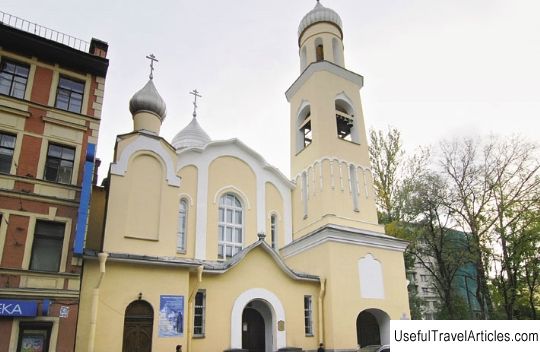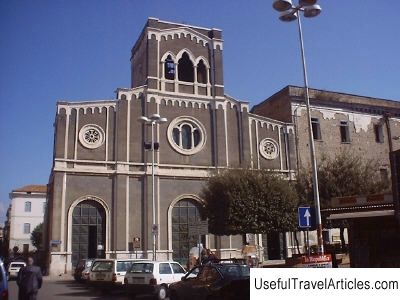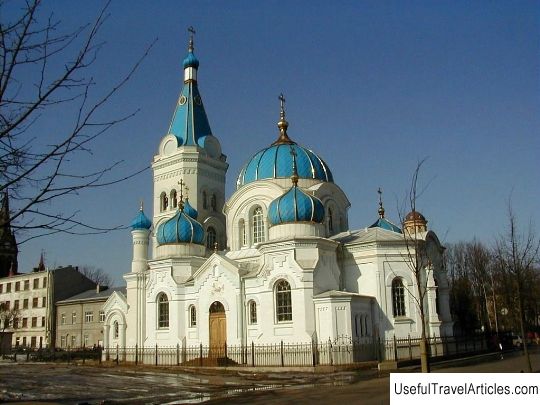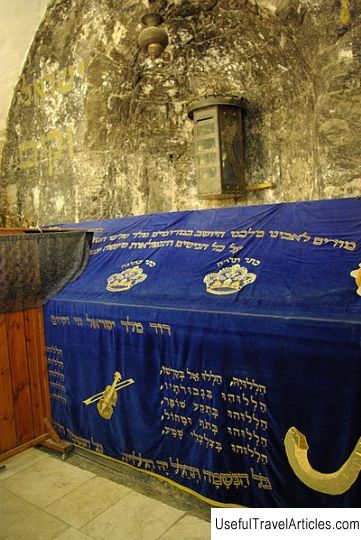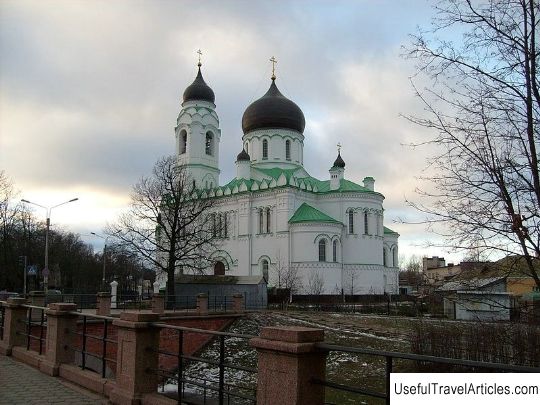Church of Simeon and Anna description and photo - Russia - Saint Petersburg: Saint Petersburg
Rating: 7,6/10 (2094 votes) 
Church of Simeon and Anna description and photos - Russia - Saint Petersburg: Saint Petersburg. Detailed information about the attraction. Description, photos and a map showing the nearest significant objects. Photo and descriptionAn architectural monument, the current Orthodox Church of Simeon and Anna is located in St. Petersburg, at the corner of st. Mokhova and V.G. Belinsky. The church is one of the oldest St. Petersburg churches. The Church of Simeon and Anna was one of the capitular churches of the orders of the Russian Empire (the temple of the Order of St. Anna). The rector is Archpriest Oleg Skoblya. The temple belongs to the St. Petersburg Metropolis of the Russian Orthodox Church and is part of the Central Deanery. In the place where the temple is now located, the wooden church of the Archangel Michael (built in 1712-1714 biennium, consecrated in 1714 in memory of the birth of Anna, daughter of Peter the Great). It was there that a new church was erected in the period from 1731 to 1734 by the architect Mikhail Grigorievich Zemtsov, who was helped by Ivan Yakovlevich Blanka. The building of the church was laid in October 1731 (construction began 2 years earlier) by order of Empress Anna Ioannovna, who, after accession to the throne, fulfilling a vow, ordered the erection of a stone three-altar church with a bell tower and a dome with many faces. The temple was attributed to the courtiers, which it remained until 1802, when it was transferred to the diocesan department. During the construction of the temple, the motives of the architecture of ancient Russia and the Anninsky style of baroque were used. The stone church received a high bell tower (47 meters) and three aisles. The famous carpenter and "typical" craftsman from Holland Harman van Bolos took part in raising the spire of the bell tower. The celebration of the consecration of the main throne took place in 1734, on January 27, which the empress herself honored with her presence. The consecration of the throne was conducted by the Novgorod Archbishop Theophanes (Prokopovich), whose service was assisted by six bishops. The main volume of the temple ends with a light drum, which is crowned with a faceted dome painted with a complex pattern. The author of the iconostasis is the woodcarver Konrad Hahn, the images are by the artists Matveev Andrey Matveyevich and Vasilevsky Vasily Ilyich. The main church altar was consecrated in honor of Anna the Prophetess and Simeon the God-Receiver, the right altar - in honor of the Archangel Michael, the left altar - in honor of Ephraim the Syrian. In the 72nd year of the 18th century, the church received a new side-altar, which was consecrated in honor of the Holy Great Martyr Eustathius Plakis, in memory of the birth of the Tsarevich. From that moment on, the church was divided into warm and cold (in the warm there was one new altar, in the cold - three, which were located under one iconostasis, in a row). Also, women's seats were arranged on two sides at the entrance to the temple, which were separated by a raised floor and partitions. The third chapel was abolished in 1802. A chapel and a sacristy were added to the church by the architect Mikhail Pavlovich Vyborov at the beginning of the 19th century. The church was expanded and renovated in 1869-1872 (architect - G.I. Wintergalter). Thus, a new chapel in honor of the icon of the Mother of God "Three-handed" (an icon of the early 18th century, now kept in the St. Nicholas Naval Cathedral; legend says that the icon was brought to the porch by water during the flood in 1777) was erected over the sacristy. In 1871, on October 17, the side-chapel was consecrated. Since 1868, a society for helping the poor existed at the temple, which contained an almshouse and an orphanage for children. In 1938, the church, like many others in those days, was closed and then plundered. The church building was given as a warehouse. The church was restored in the 50s of the last century; in the 80s there was a meteorological museum. Finally, in 1991, the church was returned to Orthodox believers, and on the first day of 1995 the church was consecrated again. Belinsky street and bridge in St. Petersburg used to be named after the church (Simeonovskie). The church building was given over to a warehouse. The church was restored in the 50s of the last century; in the 80s there was a meteorological museum. Finally, in 1991, the church was returned to Orthodox believers, and on the first day of 1995 the church was consecrated again.       We also recommend reading Caravansaray Tashhan description and photo - Turkey: Erzurum Topic: Church of Simeon and Anna description and photo - Russia - Saint Petersburg: Saint Petersburg. |
